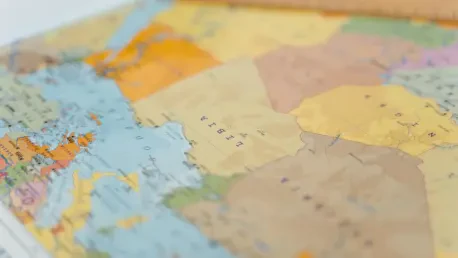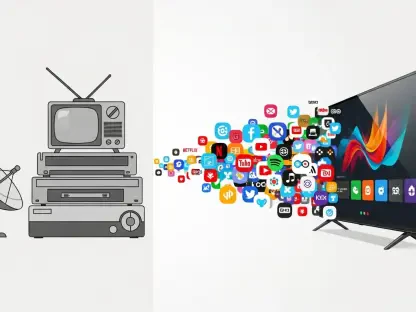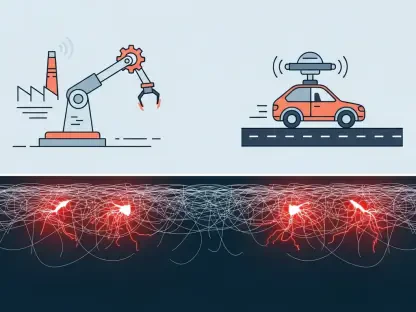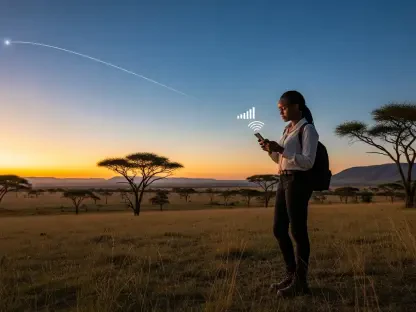What if a single technology could bridge the vast digital gaps across the Middle East and Africa (MEA), connecting millions in remote deserts and bustling cities alike with lightning-fast internet? 5G Fixed Wireless Access (FWA) is emerging as that game-changer, revolutionizing how entire regions access the online world. With connectivity often hindered by rugged terrain and uneven infrastructure, this innovation offers a lifeline, bypassing traditional barriers with wireless high-speed solutions. The stakes are high—economic growth, education, and social equity hang in the balance as telecom giants and governments push for rapid deployment.
The significance of 5G FWA in MEA cannot be overstated. This technology addresses a critical digital divide, where millions still lack reliable internet, stunting progress in key sectors. Beyond mere convenience, it’s a catalyst for transformation, enabling remote work, digital learning, and smart city initiatives. As the region stands at the cusp of a connectivity revolution, understanding the scope and impact of 5G FWA reveals why it’s a priority for stakeholders aiming to shape a more inclusive future.
Why Is 5G FWA the Hottest Topic in MEA?
In a region where internet access has long been a luxury for many, 5G FWA has surged into the spotlight as a viable solution. Unlike traditional broadband that requires extensive cabling, this technology delivers high-speed internet through wireless networks, making it ideal for both urban hubs and far-flung rural areas. The buzz around it stems from its potential to rapidly scale connectivity without the decades-long wait for fiber infrastructure, a critical advantage in a landscape hungry for digital progress.
Recent data underscores this momentum. Nokia’s Mobile Broadband Index Report projects that 5G FWA will grow from a modest share to 35% of broadband connections by 2030, a staggering leap in just a few years. This growth aligns with a broader trend of digital adoption, as telecom operators and policymakers recognize the urgency of connecting underserved populations to global opportunities.
The excitement isn’t just about numbers—it’s about real change. From enabling telemedicine in remote African villages to supporting high-tech industries in the Gulf, 5G FWA is seen as a cornerstone for economic and social advancement. This surge in attention reflects a collective realization that connectivity is no longer optional but essential for regional development.
Tackling the Digital Divide with 5G FWA in MEA
The digital divide in MEA paints a stark picture—vast swaths of rural areas and even some urban pockets remain disconnected due to geographic and economic challenges. In places where laying fiber-optic cables is either impractical or prohibitively expensive, entire communities are left behind, missing out on education, job opportunities, and basic services. This gap has long been a barrier to equitable growth across the region.
5G FWA steps in as a powerful equalizer, offering a way to deliver broadband speeds without the need for extensive physical infrastructure. By leveraging wireless signals, it can reach isolated areas, providing a lifeline to those previously cut off from the digital economy. The technology’s ability to deploy quickly means that solutions are not years away but within immediate grasp for many.
Beyond access, the implications are profound. Enhanced connectivity supports distance learning for students in remote areas, empowers small businesses to compete on a global stage, and facilitates government services through digital platforms. Addressing this divide with 5G FWA is not just a technical fix; it’s a step toward social inclusion and economic resilience in a region poised for transformation.
Unpacking the 5G FWA Boom Across MEA
The rise of 5G FWA in MEA is multifaceted, with projections signaling explosive growth over the coming years. Industry reports estimate a 27-fold increase in 5G subscriptions, reaching 605 million by 2030, accounting for 25% of mobile connections and driving 53% of data traffic. This shift indicates a fundamental change in how data is consumed and managed across diverse terrains.
Particular strength is evident in the Gulf Cooperation Council (GCC) countries—Bahrain, Kuwait, Oman, Qatar, Saudi Arabia, and the UAE—where 5G is expected to power 96% of data traffic by the end of the decade. Fueled by robust investments and a high demand for cutting-edge devices, these nations are setting a benchmark for rapid adoption. Their focus on infrastructure positions them as leaders in the regional tech race.
Elsewhere, the dual impact on rural and urban areas stands out. In remote zones, 5G FWA offers a critical connection where traditional methods fail, while in cities, it boosts capacity to meet soaring demand. Economically, the ripple effects are vast—supporting everything from remote work setups to smart city projects, this technology is redefining industries and fostering innovation at every level.
Real Stories: The Impact of 5G FWA on the Ground
Insights from the field bring the potential of 5G FWA into sharp focus. An industry analyst highlighted in recent reports noted, “5G FWA provides a cost-effective path to connectivity, sidestepping the long timelines of fiber rollout.” This perspective resonates with ongoing efforts to close gaps without draining resources, a key concern for many stakeholders in the region.
In the GCC, tangible results are already visible. Operators like Saudi Arabia’s STC have deployed 5G FWA to thousands of households, with users experiencing seamless streaming and gaming that rival wired connections. These early successes demonstrate how the technology can elevate quality of life and meet modern demands, even in densely populated markets.
Meanwhile, in parts of Africa, pilot projects are pairing 5G FWA with localized solutions to tackle unique challenges like inconsistent power supply. Though hurdles persist, the progress shows promise, with communities gaining access to tools that were once out of reach. These real-world examples anchor the broader narrative, illustrating both the transformative power and the practical obstacles of this digital shift.
Strategic Moves: Leveraging 5G FWA for Progress in MEA
For stakeholders across MEA, harnessing 5G FWA requires deliberate and coordinated action. A primary focus should be on spectrum allocation—securing the right frequency bands is crucial for efficient deployment and coverage. Governments and regulators must prioritize this to prevent bottlenecks that could slow down rollout plans.
Collaboration is equally vital. Public-private partnerships can channel funds into infrastructure for underserved areas, ensuring that the digital divide narrows rather than widens. Tailoring solutions to local contexts—high-speed networks for urban centers and reliable basics for rural zones—ensures that diverse needs are met without a one-size-fits-all approach.
Finally, building awareness is a key step. Community education on the benefits of 5G FWA can drive adoption and dispel doubts, turning curiosity into active engagement. By aligning on these strategies, governments, businesses, and telecom providers can position this technology as a cornerstone of sustainable progress, reshaping the connectivity landscape for millions.
Reflecting on a Connected Legacy
Looking back, the journey of 5G FWA in the Middle East and Africa marked a pivotal chapter in the region’s digital evolution. It tackled long-standing barriers, bringing high-speed internet to corners once deemed unreachable. The stories of transformed communities and empowered industries stood as testaments to its impact.
Moving forward, the focus shifted to sustaining this momentum. Stakeholders needed to double down on investments, refine policies for broader access, and innovate around local challenges like energy constraints. Partnerships across sectors became essential to scale solutions effectively.
Ultimately, the legacy of 5G FWA pointed toward a future of inclusivity. Continued efforts to expand coverage, coupled with education initiatives, promised to solidify its role as a bridge to opportunity. The path ahead demanded commitment, but the foundation laid offered a blueprint for enduring connectivity and growth.









